Edge Computing VS Cloud Computing: Differences, Benefits, and Best Practices
The debate between Edge Computing and Cloud Computing has been sparked because of the rise of the two most popular computing models. Although each model has its benefits and disadvantages, neither seems to be the holy grail for any situation.
In this article, we’re going to discuss the pros and cons of each of these models and their applications, which will answer every question you have until now!
Edge Computing Vs. Cloud Computing
Cloud Computing is often used as the “Pay as you go” model since you’ll only be paying for the services you need. It is ideal if you’re operating with remote teams and require data storage and off-net server/application processing.
Edge computing is a technology that often augments cloud networks. It is a distributed model that keeps data storage and computes power close to the user or data source rather than in the cloud.
Once processed on edge, the resulting data can move through the cloud for additional computing, eliminating lag time and saving bandwidth.
What Is Cloud Computing?
Cloud Computing provides services that include anything between remote storage, applications, and additional processing power generation. This flexibility allows Cloud Computing to deliver the same benefits to multiple clients, scaling them to meet each customer’s specific needs.
Benefits of Cloud Computing
The following is an overview of the main benefits of Cloud Computing.
- Centralized Applications
Businesses can host projects, data, and applications in the unified Cloud storage through Cloud Computing. This is more efficient than storing data in local servers managed manually.
- Unlimited Storage Capacity
Cloud Computing allows you to store, access, and access data from remote storage services simply and efficiently. This makes the process relatively quick, hassle-free, and ubiquitously available.
- Reduced Server Hardware Costs
Since there is no need to invest in platform upgrades, new hardware, and software, along with extra consumption costs involved in running your network, maintaining and managing your company’s IT systems is relatively low.
- Fast/Central Provisioning of Services
Cloud Computing is secure and efficient. The speed at which this Cloud system can be set is just a few hours, unlike setting up an in-house IT infrastructure which can take up to months.
- Increased Team Collaboration
Cloud Computing enhances the collaboration processes in a workforce. Team members can securely view and access the same data over the cloud-based network from anywhere and at any time. This helps improve the overall productivity of the Team as well.
- Mobility and Flexibility
Cloud Computing allows users to access all relevant data through their smartphones, laptops, or other devices. This adds to the flexibility of the IT teams and the business at large so that they can now focus purely on the core business operations instead of worrying about IT infrastructure setups.
5 Cloud Computing Use Cases
Cloud Computing is used for several real-world applications today. Five such cases which can showcase the advantages of Cloud Computing are discussed below:
- Cloud Storage and Backup
Cloud storage includes all the servers and applications in which the data is stored. This helps lower the company’s maintenance cost and reduces the time spent.
- Software as a Service (SaaS)
With the growth of a company, the volume of data they collect also increases. SaaS has become a preferred way to organize and maintain data. CRMs and Market Automation Tools are part of SaaS. And these are usually hosted on the Cloud.
- Rapid Server Resource Provisioning
When there is a need to expand the network and include additional applications, it can be done effortlessly by leveraging the Cloud infrastructure. The process can be simplified further if the resources are in the Cloud already. This is known as Rapid Server Resource Provisioning.
- Big Data Analytics
Cloud computing allows enterprises that take advantage of Big Data to collect information on consumer likes, buying trends, and dislikes and analyze that data to predict future purchases.
- Team Collaboration
Cloud solutions enable your team to work on the same project using tools, applications, and documents simultaneously. This results in a uniform development timeline because you eliminate potential team silos.
What is Edge Computing?
Edge computing is an emerging field in computing technology that refers to leveraging a range of networks and devices close to the user. It entails processing data closer to where it is being generated enabling faster speed and larger volumes of data transfers. Putting computing at the edge allows companies to improve the management of data, utilization of physical assets, create human-centric and interactive experiences, etc. Edge computing is flexible and robust. It also improves the network’s performance by bringing data collection, processing, and reporting as close to the end user as possible. This results in reduced latency.
Benefits of Edge Computing
The following are a few of the significant benefits of edge computing:
- Reduced Latency
Since data is being processed where it is created, it reduces latency in such transfers. This results in quicker response times, and also makes the data more accessible. Edge computing also minimizes WAN traffic loads and enhances the overall performance of your network.
- LAN Speed Bandwidth
Every network has a limit to the amount of data it can transmit at one time. This is known as its bandwidth. Using edge technologies, the limit of bandwidth can be increased when necessary.
- Reduced WAN Costs
Edge doesn’t eliminate the need for the cloud. Unlike Cloud Computing, Edge Computing allows you to pick which data to store locally and what to transfer to the cloud. This reduces the cost and requirement of WAN bandwidth.
- Local Computing for Real-time Data
Real-time applications can produce real-time data when IoT devices are located close to the network’s edge. This provides a fast, safe, and efficient data processing experience.
- Enhanced Compliance
Data breaches can be damaging, but with Edge Computing, this data is highly localized, enhancing compliance with prevalent regulations. The more crucial data travels, the more the probability of complications will be. Edge computing reduces this quite significantly.
- Security and Privacy
Unlike in Cloud Computing, crucial data doesn’t need to be transferred to the cloud, increasing overall network security. Since there is no need for much human intervention, the chances of data leaks and breaches are reduced as well.
- More Suited for IoT Devices
The Internet of Things or IoT is a developing paradigm, and thus the popularity of Edge computing. IoT can produce great results like improved service quality and reduced WAN transport when used in amalgamation with Edge Computing.
5 Edge Computing Use Cases
Edge Computing is used for several applications. Five such cases which can showcase the advantages of Edge computing are mentioned below:
- Cached Content Delivery
Edge caching content, whether a video, web page, or audio file, enhances the end-user experience. Latency is reduced to milliseconds. This is used by Content Delivery Network (CDN) providers such as Limelight and Netflix.
- Manufacturing Efficiency
Edge computing reduces the network time for IoT devices that collect and analyze real-time data. Compared to Cloud Computing, devices connected through the Edge getaway will experience less bandwidth backhaul while processing this data.
- IoT For Retail
IoT improved the customer experience as retail staff can now use handheld devices to provide necessary information about the products and initiate payments on the spot, making it a hassle-free and quick process for the customers. Coupling this with Edge computing makes processing data much faster largely benefiting the customer experience.
- Enhanced Healthcare Sector
IoT medical devices such as wearable sensors and blood glucose monitors generate valuable Patient-Generated Health Data (PGHD). Edge computing plays a huge role in collecting and analyzing real-time PGHD at the network’s edge making it far more robust and quicker.
- Autonomous Vehicles
Edge computing is also advantageous for autonomous vehicles as it makes collecting, sharing, and processing data possible without any latency. Edge-enabled cars can connect to a network of edge data centers separated from mobile phone data.
Will Edge Computing Replace Cloud Computing?
Cloud Computing has been standardized for the past ten years. It is used throughout several platforms because the data center focus, computing, and storage space are extensive. There are also connectivity issues and bandwidth limits when multiple devices are added to the network. Latency is also an added issue in this respect.
Edge computing and Cloud Computing can be combined to make a secure, quick, and stable network. Edge computing adds flexibility to Cloud Computing which allows organizations to expand the cloud capabilities across WAN networks.
Conclusion
With developing applications and services, there is an increase in the need for systems that provide data security, analytics, speed, low cost, and ease of use. There are pros to using Edge Computing and Cloud Computing methods for your business.
Edge computing and its simple and flexible system can be extended to accommodate the increasing demands of real-time data and services and also leverage the benefits of the Cloud. To know more about how Cloud Computing and Edge Computing can help make businesses future ready, visit the official Focaloid Technologies website today!

